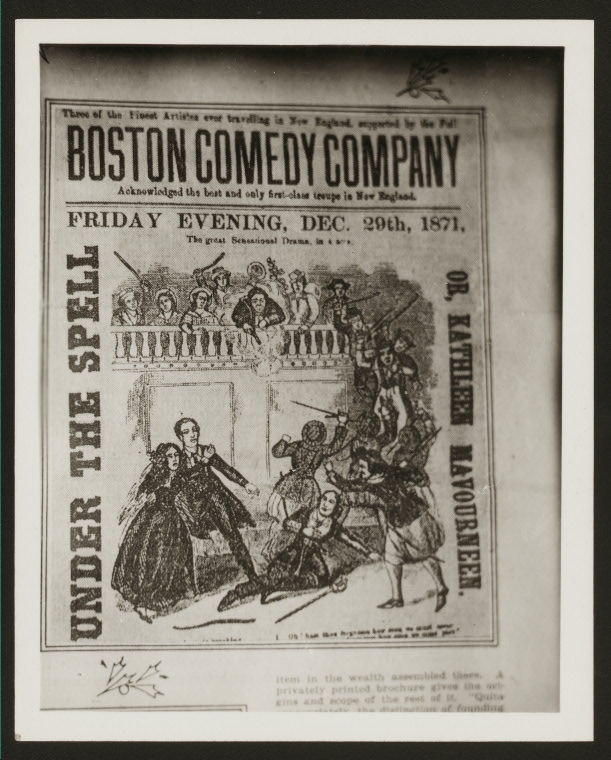In my digitization work at the Kelly Library, I have definitely found myself just trying to emphasize one takeaway impression or meaning or, as Sperberg-McQueen might say, theory. For example, I scan a portrait in a collection of 19th century French drama. I am not so focused on capturing the texture of the paper, the type of illustration (people don't need to know whether it's a wood engraving or a lithograph, right?!), or even the names of the actors that are mentioned. I'm more concerned with making sure people see the title of the play, the costumes in the illustration, the general old-timey-ness of it. In this case, the era and the aesthetic make up the representation. Maybe they even make up the essence, if you're a Platonist and you are into the essential thingness of things.
I am looking through NYPL's Digital Collections and observing the representational choices made there. In the poster section, I noticed that many individual images seem to be parts of a larger poster. I've noticed lots of cropped frames that show an edge of a separate image or a bit of text. Whoever was producing these images was making value-based decisions, like I have, about what is important and how the viewer will process the materials (one image at a time).
 |
| http://digitalcollections.nypl.org/items/510d47e2-b093-a3d9-e040-e00a18064a99 |
I picked the above image as an example because you can clearly see some of the representational choices made. Below the holly ornament is the corner of a separate frame, perhaps related to this Boston Comedy Company poster. Even if it advertises a different play, it is printed as a set - maybe the viewer is meant to see the entire season's program at once? Additionally, the text in the lower right corner remained blurry even when I used the website's zoom tool, which makes it seem as though the person scanning wasn't worried about any added context there. Much like my own example, this digital representation is telling us: "Look at this specific play! The costumes! Look at the old-timeyness!"
I think that most of us know that digitization doesn't capture all aspects of the original but I liked Sperberg-McQueen's language choices of theories and opinions to show that the act of digitizing is not necessarily a neutral process.
Works cited:
Sperberg-McQueen, C.M. "Text in the Electronic Age: Textual Study and Text Encoding, with Examples from Medieval Texts." Literary and Linguistic Computing 6, no. 1 (1991): 34-46.
No comments:
Post a Comment
Note: only a member of this blog may post a comment.